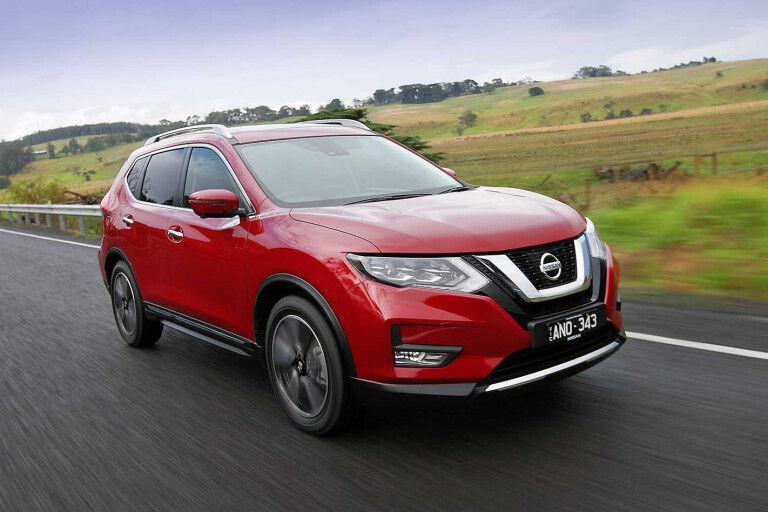
Three years after the X-Trail nameplate shifted from boxy utility to curvy docility, Nissan’s volume-selling medium SUV has come in for a mid-life refresh.
Exterior changes are modest and mostly limited to new wheel designs – 17-inch for ST, TS, ST-L; 19-inch for Ti and TL - bolder bumper plastics, revamped headlamps. Inside the centre console box is mildly revised, there’s a new automatic shifter design with a gaiter for an upmarket appearance, while a flat-bottomed steering wheel with a more conventional button layout is an aesthetically- and ergonomically- pleasing alternative to the outgoing model’s tiller.

The technology story sees greater changes. All models receive autonomous emergency braking, with Ti and TL grades adding pedestrian detection that can actively stop the car between speeds of 10-60km/h. Forward collision warning is another range-wide addition, while Ti grades enjoy active cruise control and lane keep assist as well.
Rear cross traffic alert is standard in mid-grade ST-L and high-grade Ti and TL models, and flagship Ti and TLs get headlamps that actively steer into corners, along with auto-highbeam.

Other changes include an eight-speaker Bose premium audio system, motion-activated tailgate, heated steering wheel, and heated outboard rear seats for the X-Trail Ti and X-Trail TL.
Carry-over tech includes a top-down parking camera view, lane departure warning, blind spot monitoring and potentially life-saving Moving Object Detection tech, which detects motion behind the car when reversing – such as a small child or a pet.

Mechanically, the petrol models continue with no changes. A 2.0-litre naturally-aspirated petrol with 106kW and 200Nm powers the FWD-only manual-equipped X-Trail STs and TSs, while a 126kW/226Nm 2.5-litre is the mainstay engine for all CVT auto-equipped petrol variants, and available in either front-wheel drive or all-wheel drive.
The 2017 X-Trail’s 2.0-litre turbo diesel is new, replacing the outgoing 96kW/3210Nm 1.6-litre diesel with more muscular 130kW and 380Nm outputs. Available solely with AWD and a CVT automatic, the new 2.0-litre diesel consumes 6.0L/100km on the combined cycle.

The 2.0-litre burns an average of 8.2L/100km, with the 2.5 consuming 7.9L/100km in FWD X-Trail ST form.
As before, only FWD petrol variants are available with a seven-seat configuration.
PRICING
Pricing-wise there are no changes for existing models except for petrol AWD variants, which see price reductions between $900 and $1490.
The re-engined diesel AWD X-Trail TS and X-Trail TL pricing largely reflects the pricing of the 1.6-litre models they replace, but the lower-grade $35,490 TS retails for $190 less than before and the flagship $47,290 TL variant costs $710 more.

That said, with the added equipment and improved power output that the 2017 diesel X-Trail models enjoy, the value-for-money equation has arguably been pumped up.
Nissan X-Trail ST FWD petrol manual - $27,990
Nissan X-Trail ST FWD petrol auto - $30,490
Nissan X-Trail ST FWD petrol auto 7-seat - $31,990
Nissan X-Trail ST AWD petrol auto - $32,490
Nissan X-Trail ST-L FWD petrol auto - $36,590
Nissan X-Trail ST-L FWD petrol auto 7-seat - $38,090
Nissan X-Trail ST-L AWD petrol auto - $38,590
Nissan X-Trail Ti AWD petrol auto - $44,290
Nissan X-Trail TS AWD diesel auto - $35,490
Nissan X-Trail TL AWD diesel auto - $47,290
COMMENTS